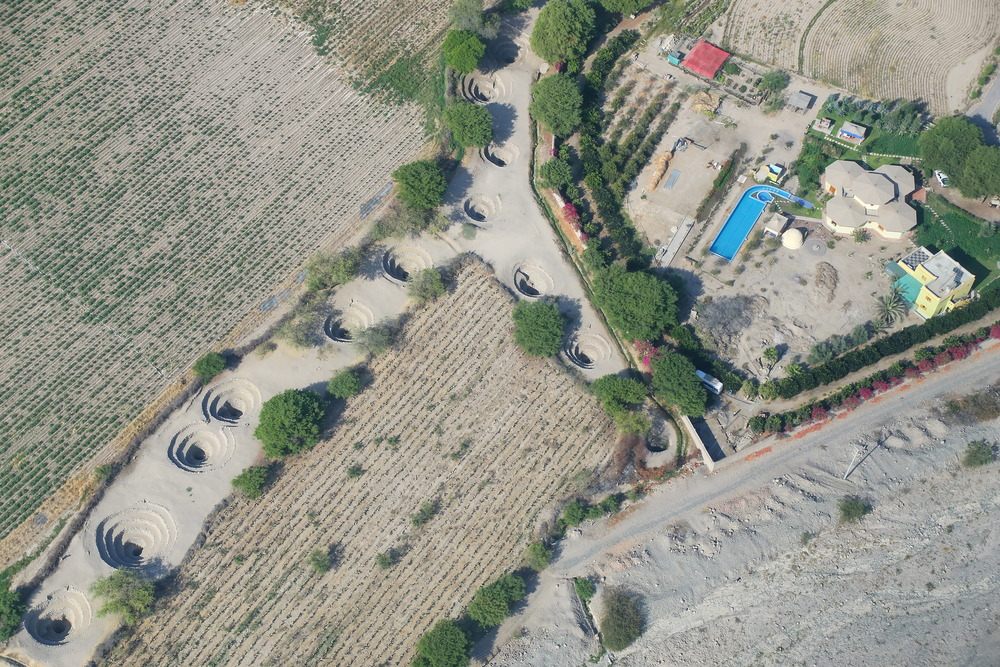An Ancient Mystery In The Peruvian Desert Has Finally Been Solved From Space
May 4, 2016
One of the mysteries of the Nazca civilization, which existed from 500 to 200 B.C., has finally been solved, thanks to satellite observations. The Nazca are famous for their impressive lines carved into the Peruvian desert, but they also built an incredible system of aqueducts, some of which still function today. The system is covered in spiral openings, called puquios, but their function remained unclear – until now.

Credit: Pikselstock / Shutterstock
Rosa Lasaponara and a team from the Institute of Methodologies for Environmental Analysis in Italy have discovered that the puquios' corkscrew-shaped tunnels funnel wind into a system of underground canals that push the water where it needs to go.
The team used satellite images to pinpoint the position of all the puquios across the Nazca region and then compared them to how water sources and settlements were distributed. Their research will be published in the journal Ancient Nasca World: New Insights from Science and Archaeology later this year.
"The puquios were the most ambitious hydraulic project in the Nazca area and made water available for the whole year, not only for agriculture and irrigation but also for domestic needs," Lasaponara told the BBC.
She added: "Exploiting an inexhaustible water supply throughout the year, the puquio system contributed to an intensive agriculture of the valleys in one of the most arid places in the world."

Credit: Don Mammoser / Shutterstock
The scale and sophistication of the puquios aqueducts indicate that their construction and upkeep must have required a collaborative and socially organized system. The builders must have had a deep knowledge of the geology of the area as well as an understanding of how to make the most of the annual variation in water availability.
It is not surprising that a civilization that was able to build such a feat of engineering was then able to design the complex Nazca lines, which include figures of animals, plants, humans, and many geometric lines. They are believed to have a religious connotation, related to the worship of mountains and water sources.
Whatever their significance and function, the builders knew what they were doing. Understanding the function of puquios might even get us closer to understanding for certain what the lines were actually for.
via IFLScience
Click Here For The Most Popular On Sunny Skyz
 Boy With Down Syndrome Nails The Whitney Houston Challenge, And The Crowd Goes Wild
Boy With Down Syndrome Nails The Whitney Houston Challenge, And The Crowd Goes Wild
 Husband Rents Mall Store To Share His Late Wife's Beloved Christmas Display
Husband Rents Mall Store To Share His Late Wife's Beloved Christmas Display
 The ŌĆśGrandma StandŌĆÖ Is Bringing Comfort And Connection, One Conversation At A Time
The ŌĆśGrandma StandŌĆÖ Is Bringing Comfort And Connection, One Conversation At A Time
 LoweŌĆÖs Staff Refuse To Give Up On Missing Cat, Find Her 85 Miles Away
LoweŌĆÖs Staff Refuse To Give Up On Missing Cat, Find Her 85 Miles Away
 This Priest Secretly Became A Masked Wrestler To Fund An Orphanage
This Priest Secretly Became A Masked Wrestler To Fund An Orphanage
 The Funniest Wildlife Photos Of 2025 Are Here ŌĆö And TheyŌĆÖre Hilarious
The Funniest Wildlife Photos Of 2025 Are Here ŌĆö And TheyŌĆÖre Hilarious
 Texans Owner Gets Left Hanging On Live TV ŌĆö What The Media Team Did Next Is Hilarious
Texans Owner Gets Left Hanging On Live TV ŌĆö What The Media Team Did Next Is Hilarious
 After 2 Years Apart, Siblings In Foster Care Are Finally Reunited
After 2 Years Apart, Siblings In Foster Care Are Finally Reunited
 Dad Jokes With Tom Hardy And His Dad
Dad Jokes With Tom Hardy And His Dad
 The Hug That Went Viral On Facebook
The Hug That Went Viral On Facebook
 Meet Inigo Montoya: The Rescue Rooster Who Loves Riding On Heads
Meet Inigo Montoya: The Rescue Rooster Who Loves Riding On Heads
